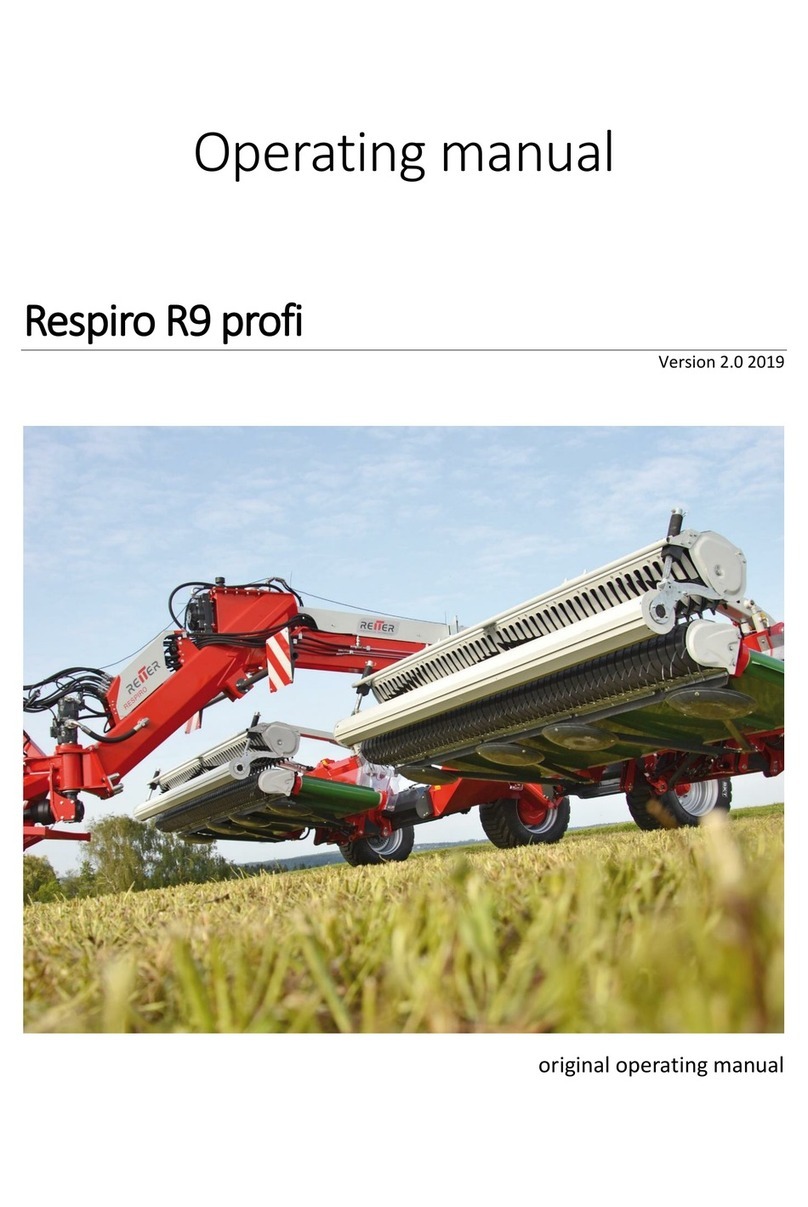
3
6.2.1 Hydraulic folding............................................................................................................ 22
6.2.2 Hydraulic spring tensioner or locking device ................................................................ 22
6.2.3 Selector switch rotor lock / lift / floating position ........................................................ 23
6.2.4 Rotor lift / lowering ....................................................................................................... 23
6.2.5 Selector switch conveyor belt direction........................................................................ 24
6.2.6 Belt speed...................................................................................................................... 25
6.2.7 Emergency stop switch.................................................................................................. 25
6.2.8 Fuse ............................................................................................................................... 25
7 Getting started / working in field .................................................................................................. 26
7.1 Folding in working position ................................................................................................... 26
7.2 Adjust working height ........................................................................................................... 27
7.3 Adjust raking height of the pick-up ....................................................................................... 27
7.4 Set suspension of the working units ..................................................................................... 28
7.5 Oil flow .................................................................................................................................. 28
7.6 Speeds of pick-up, rotor and conveyor belt .......................................................................... 29
7.7 Headland position ................................................................................................................. 29
7.8 Rotor position, rotor damping and rotor suspension ........................................................... 30
7.9 Swath roller ........................................................................................................................... 30
7.10 Pick-up cover ......................................................................................................................... 31
7.11 Folding in transport position ................................................................................................. 32
8 Maintenance.................................................................................................................................. 33
8.1 Maintenance chart ................................................................................................................ 33
8.2 Number of lubrication points ................................................................................................ 33
8.3 Lubrication plan..................................................................................................................... 34
8.4 Replacing pick-up tines.......................................................................................................... 35
8.5 Replacing rotor tines ............................................................................................................. 36
8.6 Wechsel Verschleißteller....................................................................................................... 36
8.7 Repair of the conveyor belt................................................................................................... 37
8.8 Replacing the conveyor belt.................................................................................................. 37
8.8.1 Removing the pick-up:................................................................................................... 37
8.8.2 Dismantling back and belt sealing................................................................................. 38
8.8.3 Remove conveyor belt................................................................................................... 39
8.8.4 Installing a new conveyor belt....................................................................................... 40
8.9 Adjusting the roller scraper................................................................................................... 41
8.10 Check wear of conveyor guide strips .................................................................................... 41
8.11 Cleaning of machine parts..................................................................................................... 41




























